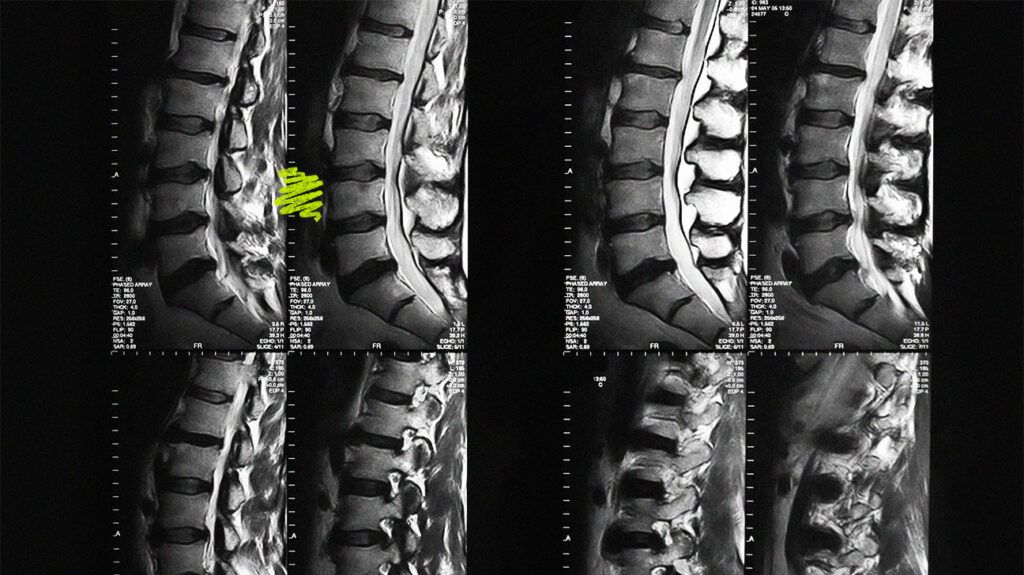Brown-Séquard syndrome (BSS) is a rare condition of the spinal cord. It can lead to one-sided weakness, paralysis, and a loss of sensitivity to pain and temperature on the other side of the body.
Another name for the condition is spinal hemiplegia, with “hemi” meaning “half” and “plegia” referring to paralysis. A syndrome is the name for a collection of symptoms that occur together. There are a few different causes of BSS.
BSS occurs due to a specific pattern of spinal cord damage, and there are a range of possible causes.
This article explains the symptoms, causes, and treatments of BSS. It also looks at diagnosis, prevalence, and more.

BSS symptoms usually develop following neck or back trauma. They include paralysis on one side of the body and a loss of sensation on the other, typically involving temperature and pain sensations.
The first symptoms often involve losing the ability to feel pain or temperature below the area of the injury. An individual may also be unable to control their bowel and bladder. The muscles that the affected area of the spinal cord control become weak and may start to break down.
People with BSS often develop paralysis on the same side that the trauma has occurred. This may become permanent if prompt diagnosis and treatment do not take place. BSS can also affect a person’s ability to walk.
Depending on the underlying cause, symptoms can range from mild to severe. Around
The location of the injury can also affect symptoms, depending on which level of the spinal column has damage.
For example, the dorsal column is a region at the back of the spine containing nerves responsible for fine touch, sensing vibration, and being aware of self-movement. In BSS, damage to this region affects these senses on the opposite side of the body to the injury.
A hemiplegic injury at the top of the neck may lead to Horner’s syndrome, which
An injury that causes BSS involves partial damage to the spinal cord without cutting through it or damaging it the whole way.
- stab wounds
- gunshot wounds
- motor vehicle accidents
- blunt trauma
- a fractured vertebra following a fall
However, certain conditions may also cause BSS. These include:
- brain and spinal disorders, including:
- a curved spine, also known as kyphosis
- cervical spondylosis
- Chiari 1 malformation arachnoid cyst
- spinal epidural hematoma
- intravenous drug use in the neck, such as injections of methamphetamine in the veins
- multiple sclerosis (MS)
- a
blood flow blockage to part of the body - brain and spinal tumors, such as an intramedullary tumor
- infectious diseases, including:
- meningitis
- empyema
- some herpes viruses
- myelitis
- tuberculosis
When diagnosing the cause of a person’s symptoms, a doctor needs to be aware of any recent injuries to the spine or any ongoing neurological conditions, such as MS.
They will perform a physical examination to assess a person’s sensation, strength, reflexes, and coordination. This can help establish how the individual moves before treatment so that the doctor can measure the effectiveness of any therapies or surgeries.
They will
The treatment for BSS depends on the underlying cause. Receiving a course of high dose steroids
Steroids can temporarily reduce swelling, and this can help prevent permanent spinal cord damage before more definitive treatment is available. This might include surgical removal of a tumor or relief of compression from a herniated disc.
However, some medical opinions
People with severe BSS may need ongoing support in several forms:
- physical therapy to improve mobility
- occupational therapy to support a person’s journey through work and daily life
- mobility devices, including wheelchairs and limb supports
These can help a person with BSS regain independence and improve their quality of life.
BSS is a rare condition — there are around
The
Below are answers to some common questions about Brown-Séquard syndrome.
What is the most common cause of Brown-Séquard syndrome?
Traumatic injuries to the spinal cord are the
Is Brown-Séquard syndrome progressive?
The progression of symptoms and effects of treatment depends on the underlying cause of BSS. Progressive conditions only get worse. However, around
What is the commonly affected spinal tract in Brown-Séquard syndrome?
BSS affects every tract on one-half of the spinal cord.
Brown-Séquard syndrome (BSS)is a rare condition that can occur due to partial spinal cord injury. Paralysis occurs on the side of the body that has the injury, while the other side experiences a loss of sensation. People often lose feelings of pain and temperature sensitivity.
Knife and gunshot wounds are the most common causes of BSS. Alternative causes may include other injuries, infections, spinal conditions, and neurological disorders.
Treatment depends on the underlying cause, but it may involve spinal surgery or steroids. Physical therapy and rehabilitation can help improve the quality of life and restore walking in many with BSS.
